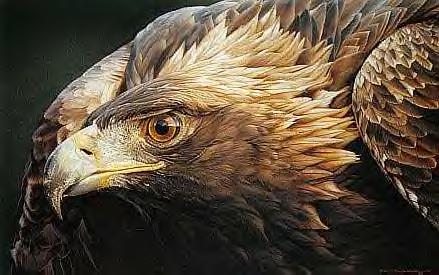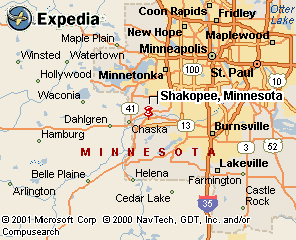|
|
Canku Ota |
|
|
(Many Paths) |
||
|
An Online Newsletter Celebrating Native America |
||
|
August 25, 2001 - Issue 43 |
||
|
|
||
|
Powwow Puts Focus on Eagle Feathers |
||
|
by Mara Gottfried Pioneer Press-August 19, 2001 |
 Shakopee, MN - Smiley Shepherd Jr. is a warrior, and
he has the eagle feathers to prove it. Shakopee, MN - Smiley Shepherd Jr. is a warrior, and
he has the eagle feathers to prove it.He wore 22 feathers on his back in the shape of wings and carried an eagle wing during a powwow Saturday at the Shakopee Mdewakanton Sioux Community. "The eagle is sacred for us because of its fierceness, its strength and its power," said Shepherd, a Vietnam veteran and member of the Sisseton-Wahpeton Sioux tribe in South Dakota. "Our warriors used to earn them in battle and veterans wear them today in the tradition of those warriors." For most American Indians, there is no higher honor than receiving an eagle feather. They view eagles as majestic creatures that fly high enough to carry messages to their creator. American Indians earn feathers from each other in naming ceremonies and for doing good deeds. But the feathers are a precious commodity in more ways than one. United States law made it illegal to kill eagles in 1940. It is also against the law to possess a bald or golden eagle, whether it is alive or dead. The government allows American Indian tribes to obtain eagle feathers for ceremonies, but they have to come from a repository for eagle parts in Colorado. An American Indian must be a member of a tribe that is formally recognized by the government to secure a permit that allows them to carry eagle parts. And while American Indians can apply for a permit to carry eagle parts into Canada, U.S. customs law prevents Canadian Indians from carrying eagle parts into the United States. Some American Indians at Saturday's powwow said the U.S. regulations are unfair. "We've been using eagle feathers for thousands of years, and for the white man to come in and say we can't do this anymore without regulations -- I don't think so," said Clint Greene, a Mohawk Indian who lives in Memphis. "I don't carry a permit because the feathers are a symbol of honor for me and I don't need the white man's permission to have them." Greene, who grew up on the Grand River Six Nations Reserve in Ohsweken, Ontario, said the regulations that prevent Canadian Indians from carrying eagle parts into the United States are unjustified. "There is no border between Canada and the United States from our perspective," he said. "It's a concept that was created by the white man." But Shepherd said many American Indians have no problem with the regulations. "We work very closely with the government and they seem to respect us on this issue," he said. "Sure, there are a small amount of people who feel angry because they look at the government as restricting their freedom, but I don't think that's the case at all." Many American Indians don't like to get embroiled in the controversy. Instead, people like Jerry Dearly, a Lakota Indian who lives in St. Paul, focuses on why eagle feathers are so important to him. "Eagles live between heaven and earth so their feathers are everything to us," Dearly said. "Receiving an eagle feather is the highest honor -- it's like getting a doctorate degree for the white man. But we don't need a piece of paper to be honored; the eagle feathers bring us blessings." |
|
|
|
Find out about Golden Eagle
Feathers |
|
|
||
|
|
||
| Canku Ota is a free Newsletter celebrating Native America, its traditions and accomplishments . We do not provide subscriber or visitor names to anyone. Some articles presented in Canku Ota may contain copyright material. We have received appropriate permissions for republishing any articles. Material appearing here is distributed without profit or monetary gain to those who have expressed an interest. This is in accordance with Title 17 U.S.C. section 107. | ||
|
Canku Ota is a copyright © 2000, 2001 of Vicki Lockard and Paul Barry. |
||
|
|
|
|
|
The "Canku Ota - A Newsletter Celebrating Native America" web site and its design is the |
||
|
Copyright © 1999, 2000, 2001 of Paul C. Barry. |
||
|
All Rights Reserved. |
||

